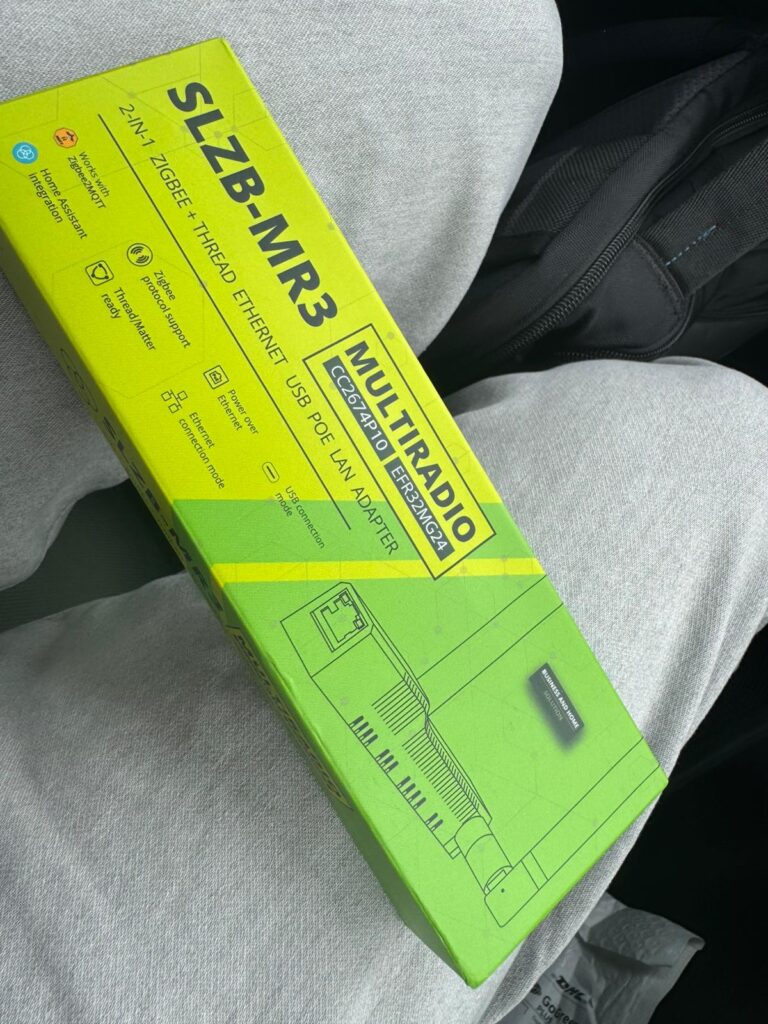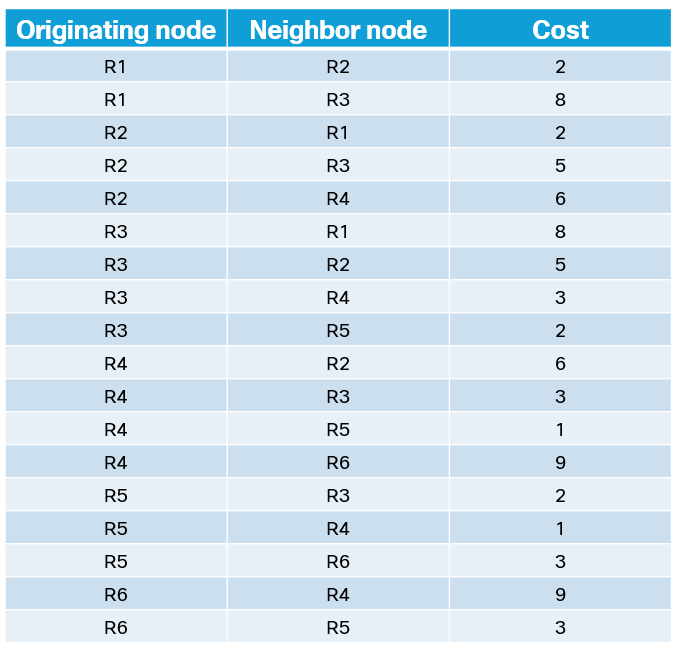In the smart home ecosystem, it’s not just about how many devices you have – it’s about how well you combine them together. Enter the SLZB-MR3 Multiradio Adapter: an innovative gateway module that unifies Zigbee, Thread, and Ethernet connectivity into a single, powerful solution. With native Home Assistant integration and Power-over-Ethernet (PoE) support, the SLZB-MR3 sets a new standard for smart home infrastructure — eliminating the need for clunky USB dongles entirely. And of course I immediately had to buy one right when they were released 

What Is this magic “SLZB-MR3 Adapter / Gateway”?
The SLZB-MR3 is a compact multiradio adapter designed to bridge multiple smart home communication protocols into one Gateway. Unlike traditional USB sticks that require drivers, separate power supplies, and manual setup (we all know how hideous this is in proxmox when your HA is running as a VM…), this device offers a plug-and-play experience with serious professional-grade features:
Zigbee:
Zigbee remains one of the most popular and widely supported wireless protocols in the smart home world — and for good reason. It’s low-power, reliable, and has a massive ecosystem of devices, from motion sensors and light bulbs to thermostats and locks. Major brands like Philips Hue, IKEA TRÅDFRI, Aqara, and Sonoff all rely on Zigbee for dependable wireless control.
Thread / Matter ready:
Thread / Matter is a modern, IPv6-based (finally we ditch the antique IPv4-Dinosaurs) wireless mesh protocol specifically designed for low-latency, secure, and scalable communication in smart home environments. Unlike Zigbee, which requires a central coordinator, Thread devices create a self-healing mesh network that can operate independently of the internet or a hub.
Ethernet:
One of the biggest limitations of USB-based Zigbee/Thread adapters is their reliance on a Desktop or Server USB port, which can be unstable, suffer from interference, or shut down due to sleep or power management settings – not to mention the driver issues, passthrough and so on. The SLZB-MR3 avoids all of these problems by providing native Ethernet connectivity, which brings significant advantages. Thanks to PoE-Support you can mount it anywhere your Ethernet cables reach, not just next to your Home Assistant server. Having a reliable wird uplink also ensures that the Gateway remains reachable even when the Air is “poisoned” (technical “poison”, not actual poison of course which would still let the device run but probably kill you so it wouldn’t matter anyways…) This makes the SLZB-MR3 ideal for serious smart home enthusiasts like myself looking for industrial-grade reliability for a small buck.
Two Chips, One Purpose
At the heart of the SLZB-MR3 are two powerful chips:
CC2674P10: A modern SoC from Texas Instruments, optimized for low power and robust performance
EFR32MG24: A versatile, high-performance wireless SoC from Silicon Labs

By combining these two chipsets, the SLZB-MR3 achieves dual-radio functionality and protocol flexibility ensuring better range, faster performance, and higher reliability, even in complex environments.What makes this design particularly groundbreaking is that both chips are fully capable of handling Zigbee and Thread protocols independently. This means that users have the extraordinary flexibility to assign either protocol to either chip as needed. Whether you decide to run Zigbee on one chip and Thread on the other, or switch them according to your network requirements, the SLZB-MR3 adapts seamlessly. This versatility helps mitigate radio congestion and ensures that both protocols operate optimally even in dense environments. In my Tests I tried both Variants and both are running reliable – so at the end it’s totally up to you and also depends on your ecosystem. But it’s nice to know that one can switch chips if there’s an issue – something I haven’t yet seen in any other Gateway so far and which is groundbreaking in my opinion 
Why is it better than USB Dongles?
While USB dongles have long been the default choice for adding Zigbee or Thread connectivity to smart home hubs, they come with a variety of well-known drawbacks (see my other posts). USB ports on devices like Raspberry Pis or mini-PCs can be unstable as they’re often subject to power fluctuations, sleep states, or bandwidth limitations, especially when multiple peripherals are connected. USB dongles are also physically tied to the location of the host machine, which may not be ideal for optimal wireless coverage. Many users end up plugging them into extension cables or USB hubs just to get them away from sources of interference, leading to cluttered and fragile setups.
The SLZB-MR3, by contrast, is connected via Ethernet, making it completely independent of your smart home server’s physical and power environment. This means you can place the adapter wherever you get the best radio coverage as long as you have Ethernet connectivity – like in the middle of your house, up on a wall, or even inside a structured network cabinet. And thanks to its Power-over-Ethernet capability, you don’t need a separate power supply or messy cabling – a single Ethernet cable delivers both power and data which can be extremely handy in some areas where you do not have a power outlet.
One of the most practical advantages of this setup is how it simplifies over-the-air (OTA) firmware updates for your Zigbee and Thread devices. With USB dongles, OTA updates can be hit-or-miss and may require special firmware flashing or additional configuration on the smart home server. In many cases, the update process is blocked or throttled due to hardware or driver limitations. With the SLZB-MR3, OTA updates are handled more reliably and directly by the adapter itself, reducing the burden on your server and eliminating the need for patching or workarounds. It behaves more like a true network-coordinator — not just a passive radio stick. And if something breaks in the future, your HomeAssistant Server is not affected despite not seeing the Devices all of a sudden.
The SLZB-MR3 isn’t just another smart home adapter but a next-generation communication hub designed for reliability, flexibility, and simplicity. Whether you’re building a robust Zigbee network, diving into Thread/Matter, or just tired of dealing with flaky USB dongles, the SLZB-MR3 delivers a clean, future-proof solution. Once I have played with it in my live-environment and have added 200+ Sensors to it we’ll see if it delivers what it promised – but so far I’m extremely pleased with the Devices from SMLIGHT.





